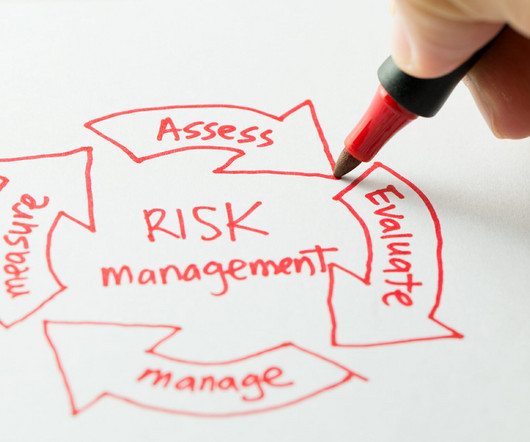Getting Started with Enterprise Risk Management
MHA Consulting
MARCH 14, 2024
Risk can never be eliminated but it can be mitigated. In today’s post, we’ll take a look at how organizations can get started using Enterprise Risk Management (ERM) to reduce their exposure and improve their resilience. Risk can never be completely removed, but it can be mitigated. ERM is all about reducing.
























Let's personalize your content